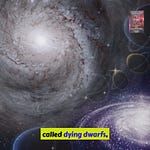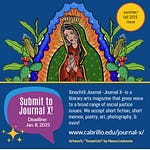'Hoodpoetics, Chicanxs, and the need for heterotopias
1. What was the Carnian Pluvial Event?
The Carnian Pluvial Event was a period of increased rainfall that lasted for approximately 1-2 million years, occurring around 232-234 million years ago during the Carnian Age of the Triassic Period. This event marked a significant shift in Earth's climate, transitioning from a predominantly arid period to one characterized by substantial and persistent rainfall.
2. What evidence supports the existence of the Carnian Pluvial Event?
Geological evidence from various parts of the world supports the occurrence of the Carnian Pluvial Event. Researchers found layers of sediment deposited in a manner consistent with prolonged heavy rainfall. Examples include:
Siliclastic sedimentation in carbonate rocks found in the Eastern Alps.
Layers of gray rock within red stone formations discovered in the UK.
The Huizachal Group and Potosi Formation in northeastern Mexico, which exhibit sedimentary features indicative of ancient rivers and floodplains.
3. How did the Carnian Pluvial Event impact life on Earth?
The Carnian Pluvial Event coincided with a period of rapid diversification and expansion of dinosaurs. The wetter climate likely contributed to the flourishing of plant life, providing ample food sources and diverse habitats for these creatures. However, the event also led to changes in marine ecosystems and possibly caused the extinction of some species less adapted to wetter conditions.
4. What is the significance of the blue deer in the poem "The Carnian Pluvial Cervus"?
The blue deer in Tezozomoc's poem symbolizes the transformative power of the Carnian Pluvial Event. Emerging from the depths of the ocean, it embodies the interconnectedness of land and sea and represents the emergence of new life and possibilities amidst environmental change. Its blue coloration evokes the ancient, flooded world, connecting the present arid landscape to its watery past.
5. How does the poem "The Carnian Pluvial Cervus" connect to Chicana/o identity?
The poem, through the figure of Huehuecoyotl, the old coyote, utilizes the landscape of northeastern Mexico as a setting for storytelling and cultural memory. This landscape, marked by the geological evidence of the Carnian Pluvial Event, becomes a canvas upon which Chicana/o identity is woven, connecting the present generation to a deep, primordial past.
6. How does the poem explore themes of migration and the pastoral?
The poem doesn't explicitly address human migration but explores the movement of life forms in response to the Carnian Pluvial Event. The blue deer, transitioning from sea to land, embodies this adaptation. The poem also evokes a sense of longing for a wetter, more fertile past, a sentiment often found in pastoral literature where a lost, idealized connection with nature is mourned.
7. How does the poem address the psychological impact of prolonged environmental change?
The poem, through Huehuecoyotl's narration, emphasizes the need for psychological resilience to endure the relentless rains of the Carnian Pluvial Event. Qualities such as "perennial pluckiness," "unflinching phlegmatism," and "sanguine serenity" are presented as necessary for navigating such a drastically altered world. This highlights the profound ways environmental shifts can impact not only the physical landscape but also the mental and emotional states of beings.
8. How does the poem "The Carnian Pluvial Cervus" relate to the work of Chicana writers like Gloria Anzaldúa and Cherríe Moraga?
The poem shares thematic connections with Anzaldúa and Moraga's work, particularly in its exploration of a "return" to a past landscape and its connection to cultural identity. While Anzaldúa and Moraga focus on a personal and communal return to a lost homeland, the poem delves deeper into geological time, connecting contemporary Chicana/o identity to ancient environmental transformations. The poem, like their writings, emphasizes the interconnectedness of human experience with the natural world and the importance of understanding the past to navigate the present and future.














Share this post